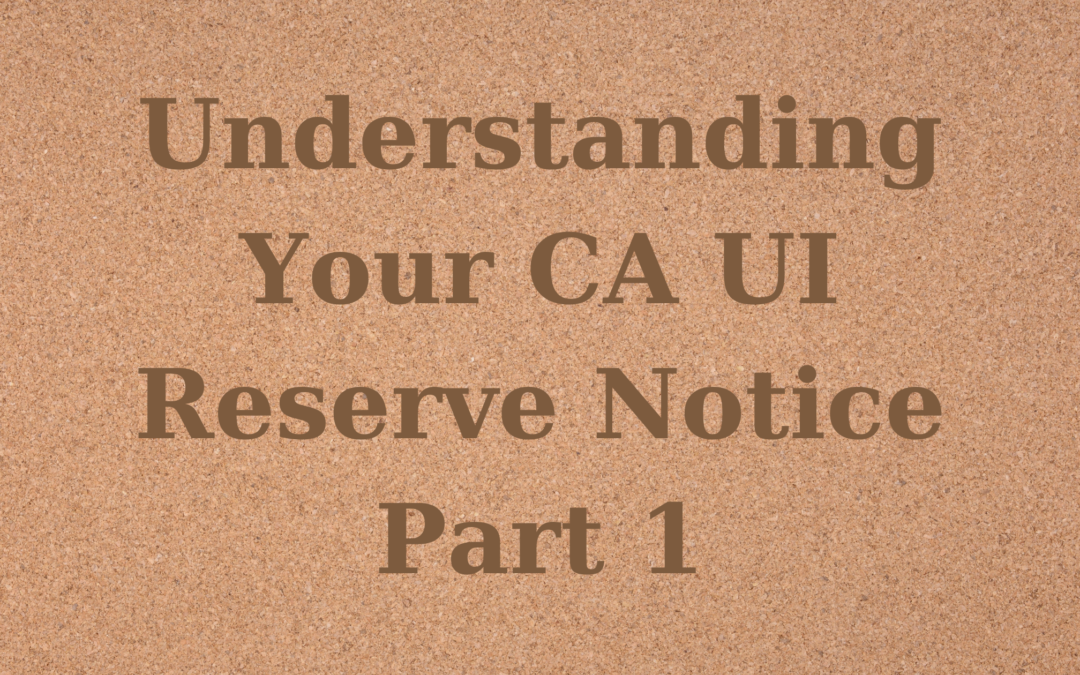All California employers receive a Notice of Contribution Rates and Statement of UI Reserve Account in December. This information needs to be sent to your payroll processing company so that they know your UI rate for the next calendar year. The UI rate is not the same for all employers. I’ll be explaining the information on the statement over the next few posts.
In the box on the right side of the form shows the UI (Unemployment Insurance), the ETT (Employment Training Tax), and the SDI (State Disability Insurance) rates to be charged in the next calendar year. All employers pay .10% for ETT unless the UI rate is the maximum of 6.2%. The SDI rate is charged to the employees but is listed on this form for informational purposes. The annual taxable wage limit for UI/ETT and SDI is also listed. The maximum wages subject to UI are $7000 and $100,880 for SDI. This means as an employer, you pay the UI/ETT rate on every employee up to a maximum of $7000 of earnings (if at the highest tax rate, the total tax per employee is $434.00). The employee has to pay 1% of wages up to the limit of $100,880 (maximum paid is $10,088).
Your UI rate is determined each year and can change for any number of reasons. New Employers ar assigned a rate of 3.4% for two to three years. After that, the contribution rate is determined by the experience rating and the amount of money in the UI Fund. The experience rating is based on claims for unemployment paid to former employees found to be eligible for benefits.
The UI rate schedule is the same for all employers. This is the multiplier used to determine your UI rate based on the ratio of your reserve to the wages paid. Currently, CA is in the F+ (the highest), and the rates to be paid range from 1.5%-6.2%.
Below the rates for the upcoming year is a list of charges and credits to the UI balance of each employer. As there is a lot of information to cover on this topic, it will be shared in the next post.
